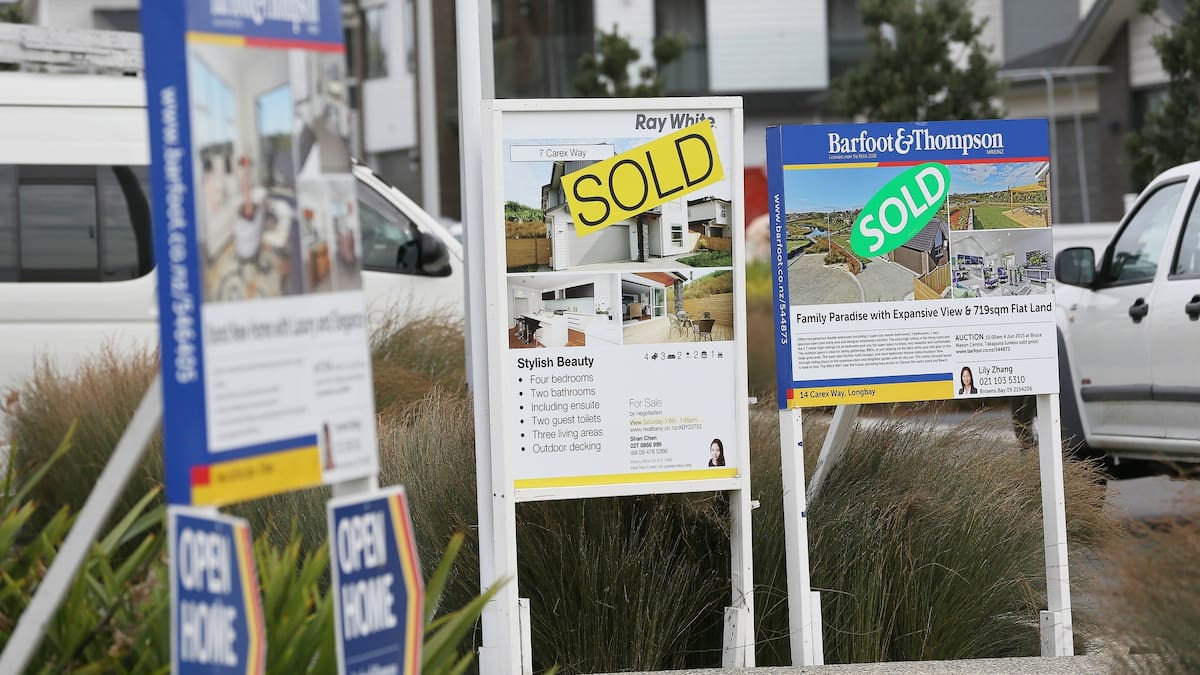“This also suggests that mortgage rates could have a bit further to fall yet, especially for floating or short-term fixed loans. With around 45% of existing mortgages either floating or fixed and set to reprice within the next six months, those borrowers will be feeling a little happier.
“Provincial areas seem to be turning a corner, and there does seem to be growing scope for values to start rising more consistently in 2026, albeit a fresh boom seems unlikely – especially with the economy and labour market only set to recover slowly.”
He said the rise in the physical supply of property relative to New Zealand’s population was another factor for caution about house price growth, along with restraints from debt-to-income ratios for mortgage lending.
Cotality chief property economist Kelvin Davidson says it “seems pretty likely” the Reserve Bank will cut the Official Cash Rate below the previously expected low of 2.5%. Photo / Peter Meecham
Kiwibank chief economist Jarrod Kerr told the Herald the OCR would need to drop further from its current 3% to stimulate the housing market.
“They’re at a level [currently] which is actually kind of neutral. It’s not stimulating it. When I talk to developers, they’re looking for another 50 basis points.
“I think that’s when things start getting closer to rental yields, they start getting closer to the required returns on a lot of business investment,” he said.
“That’s where we need to be. We need to be stimulating in order to get the housing market back and in order to get business back. The Reserve Bank has not done enough over the last two years to alleviate the pain in this economy.”
Infometrics chief economist Brad Olsen told the Herald there was a “pretty strong expectation for a cut” next week.
Kiwibank chief economist Jarrod Kerr says the OCR needs to be cut by at least 50 basis points to stimulate the housing market. Photo / Supplied
“Our current forecast is a terminal rate, a low point, for the OCR at 2.25%. That will have an influence on the housing market,” Olsen said.
“But given you’ve seen some pretty large falls in interest rates and house prices are still 17% below their peak, we’re not necessarily expecting that further interest rate cuts will immediately spark up the market.
“All eyes are on the Reserve Bank next week. The question is how large the cut is, whether it’s the usual 25 [basis points] or if they go for the bigger 50.”
Price movements between regions, meanwhile, have been patchy. Some economists say the two-track economy has filtered through to the housing market.
“We shouldn’t get carried away with any flow-on effects from the farming upturn into the provincial property markets, given there’s still a degree of uncertainty across the wider economy,” he said.
“But September nevertheless showed a pretty clear urban-rural property market divergence, which we’ll keep a close eye on.”
While average house values in Auckland dropped 0.2% to $1.05 million in September, and by 0.4% to $794,353 in Wellington, the only regional towns to record falls last month were Rotorua and Whangārei.
There was a 2.5% increase to $607,863 in Gisborne, while values rose by 0.7% to $707,965 in New Plymouth and 0.8% to $520,639 in Invercargill.
Christchurch recorded a lift of 0.6% to $693,680, Dunedin had an increase of 0.3% to $597,767, Hamilton was flat, and Tauranga notched a 1.3% increase to $921,574.
Raphael Franks is an Auckland-based reporter who covers business, breaking news and local stories from Tāmaki Makaurau. He joined the Herald as a Te Rito cadet in 2022.
Sign up to The Daily H, a free newsletter curated by our editors and delivered straight to your inbox every weekday.

